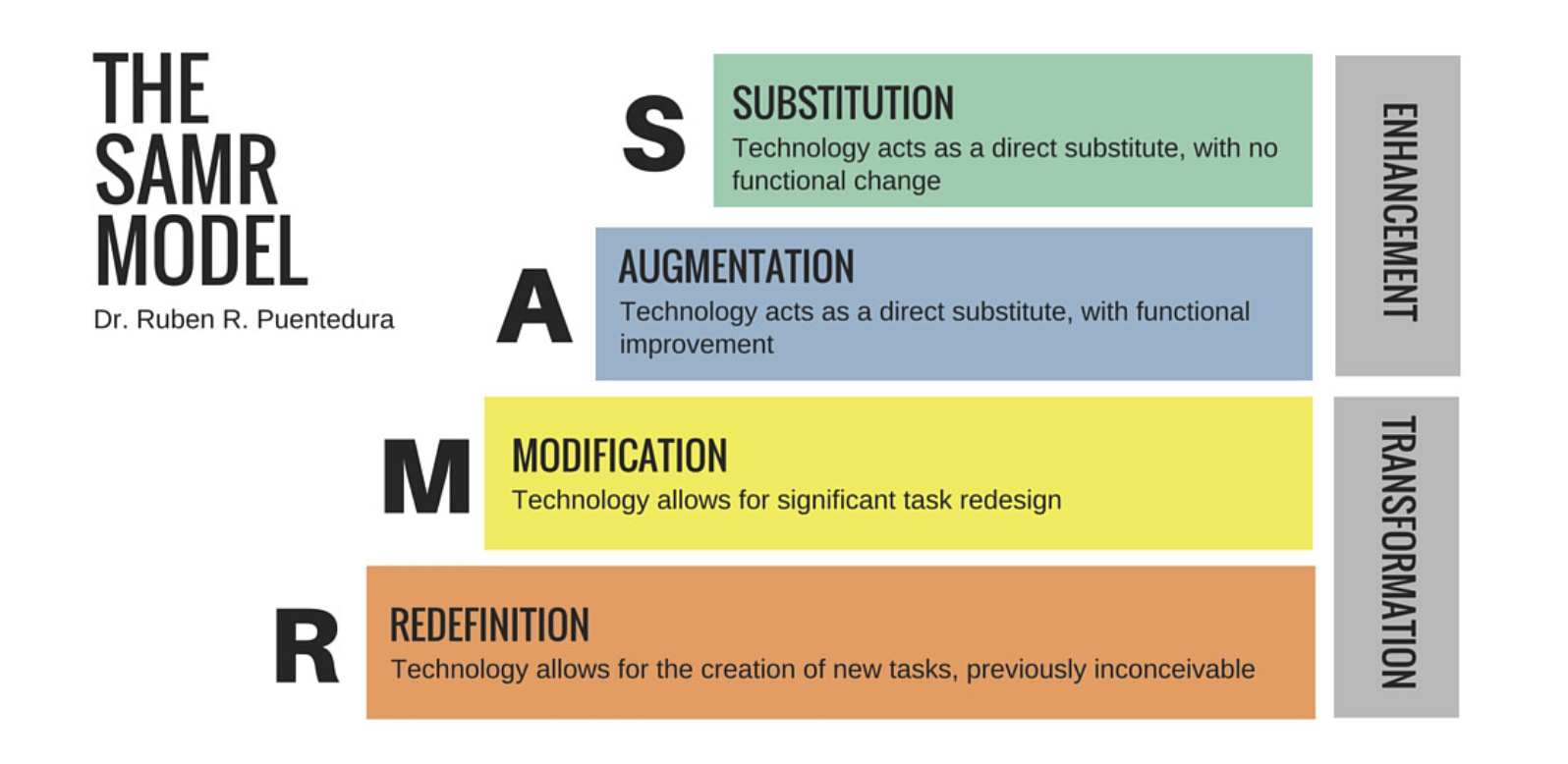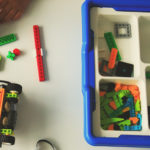Technology integration has been a large part of my teaching experience beginning when I was a student teacher. I used a Smartboard, successfully with a first-grade class to identify new vocabulary in a story. We highlighted and underlined various words, as well as identified sight words that were part of our word wall. I was even brave enough to do this lesson as part of my student teaching evaluation.
My first profession in programming, database management, and training adults on technology, provided me with valuable insight that would prove useful in an elementary school setting. Training adults is very much like teaching elementary kids. It takes patience, you need to break down processes, allow plenty of time for questions to be asked, and give opportunities for practice. While training adults on computer systems that I developed, I found an interesting niche in education, technology integration.
I reviewed several technology integration models for one that best fit my style of teaching and selected the SAMR model. I most relate to the straightforwardness of the components, and simply put, its practicality towards technology integration is how I function as a teacher. Below I describe the SAMR model, its components, how I have applied this to make basic upgrades in the delivery of instruction, and where I’d like to transform my teaching next.
SAMR Model
The SAMR model allows educators to follow the technology integration process as it is merged with their curriculum to enhance instruction and students’ experience. SAMR, is an acronym for Substitution, Augmentation, Modification, and Redefinition. As one walks through these four entities, the level of technology integration moves from enhancement to transformative effects. I’ll break down each of these sections and identify examples in my own teaching practice.

Graphic labeled for reuse taken from: https://commons.wikimedia.org/wiki/File:The_SAMR_Model.jpg
https://commons.wikimedia.org/wiki/File:The_SAMR_Model.jpg
For more information about the SAMR Model
8 Examples of Transforming Lessons
Substitution
As its name suggestions, substitution is taking one thing and replacing it for another. When I teach a lesson for students, old school, I would stand in front of a class and lecture, using words to convey the main points. An example of substitution may be taking a video recording of my lecture to distribute. The medium may be different but the information is still being conveyed in a similar fashion.
Augmentation
The augmentation phase of SAMR takes the substituted value and adds a functional improvement. In the example of the lecture being substituted by a video lecture, the augmentation that may occur is the posting of the video on a form (i.e. Youtube), which allows for feedback, comments, and interactions with an audience.
These first two stages are considered Enhancements made through the technology integration.
Modification
Modification is a more intensive substitution process. In this phase the technology allows the task to be significantly redesigned in order to transform the experience. The above example of substitution and augmentation is something that I do regularly as part of my teaching practices. There are wonderful resources that I am beginning to use that will allow me to modify my technology integration practices even further. Flipgrid is the resource I am beginning to explore. I can post video lecture snippets for students in a classroom account, and produce smaller chucks of my lesson for students to reflect and comprehend.
Redefinition
Redefinition takes modification one step further and is a transformative process along with modification. The component promotes the creation of new tasks that were not previously available. As technology advancements continue to progress this becomes more and more prevalent. Continuing with our Flipgrid example, students could respond with video clips to answer a question that was posed, make a comment, or ask a question. This modification transforms the interaction between teacher and student, and these enhanced capabilities that weren’t previously available on an interactive platform allow the technology integration to reach a level of redefinition of the learning that is taking place.
As we think of the daily challenges that face teachers, technology integration is one that tends to be at the top of educators’ lists.
An easy-to-follow method that walks a teacher through a process, that doesn’t require professional development, is an excellent strategy to have in one’s toolbox. I challenge each reader to find a lesson and see if you can work your way through SAMR by first Enhancing and then Transforming your technology integration teaching practices.






